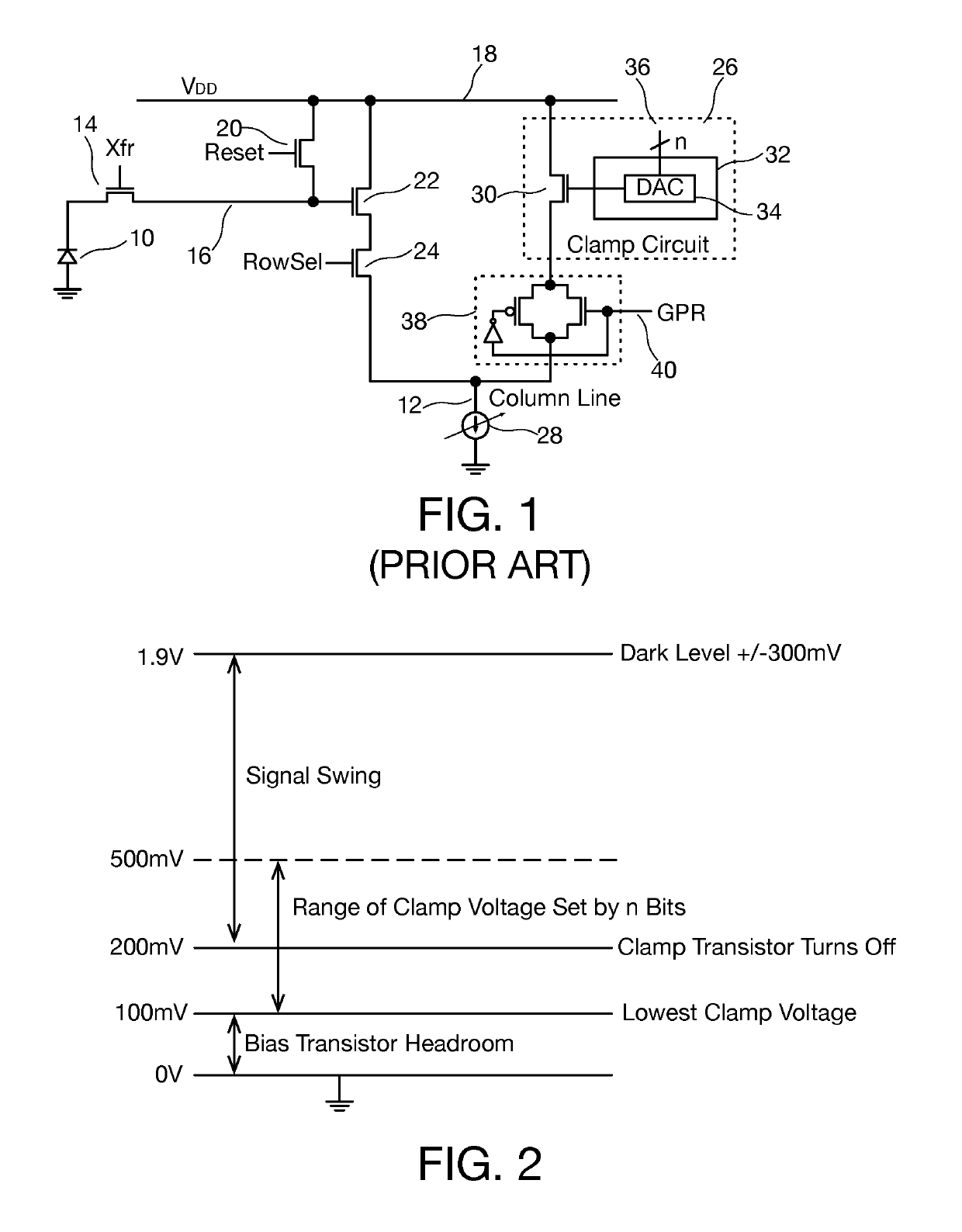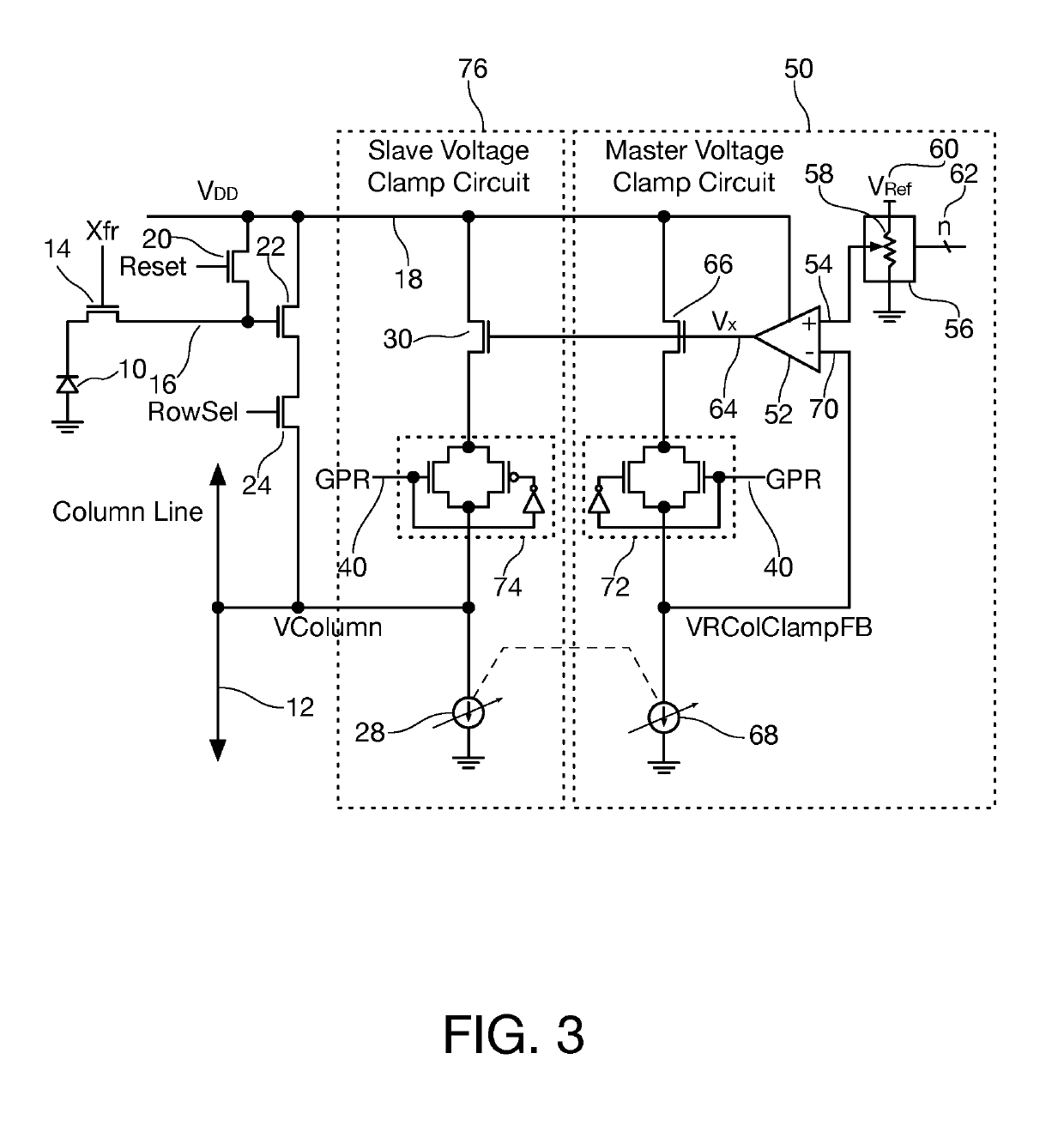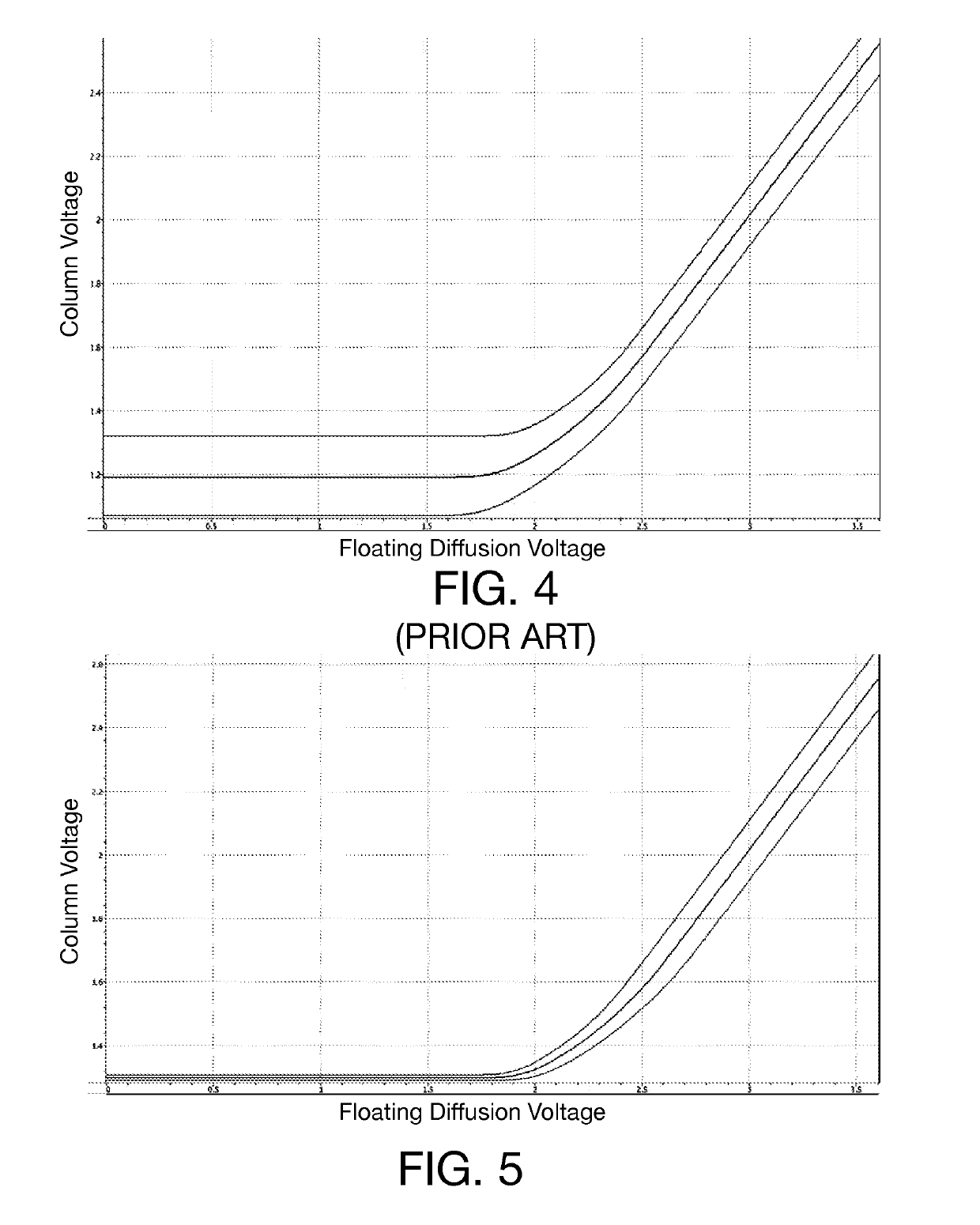Column line clamp circuit for imaging array
a technology of column clamp circuit and imaging array, which is applied in the field of column readout circuit for cmos imaging array and to voltage clamp circuit, can solve the problems of signal loss, precision errors in column clamp voltage set, and conventional column clamp circuits tend to be relatively slow, so as to increase the exposure or brightness of the object reflected
- Summary
- Abstract
- Description
- Claims
- Application Information
AI Technical Summary
Benefits of technology
Problems solved by technology
Method used
Image
Examples
Embodiment Construction
[0021]Persons of ordinary skill in the art will realize that the following description of the present invention is illustrative only and not in any way limiting. Other embodiments of the invention will readily suggest themselves to such skilled persons.
[0022]Referring now to FIG. 3, a column line master voltage clamp circuit 50 in accordance with the present invention is shown. FIG. 3 is a schematic diagram that depicts a typical pixel sensor (photodiode 10) coupled to a column line 12 for reading out the sensed light. A transfer switch 14, usually in the form of an n-channel transistor isolates the photodiode 10 from a floating node 16. The floating node 16 and the cathode of the photodiode 10 are reset to a voltage VDD on line 18 by turning on a reset transistor 20 for a reset period of time while the transfer switch 14 is turned on. After the reset time has ended, reset transistor 20 is turned off and photocharge generated by the photodiode 10 accumulates as a voltage on the capa...
PUM
 Login to View More
Login to View More Abstract
Description
Claims
Application Information
 Login to View More
Login to View More - R&D
- Intellectual Property
- Life Sciences
- Materials
- Tech Scout
- Unparalleled Data Quality
- Higher Quality Content
- 60% Fewer Hallucinations
Browse by: Latest US Patents, China's latest patents, Technical Efficacy Thesaurus, Application Domain, Technology Topic, Popular Technical Reports.
© 2025 PatSnap. All rights reserved.Legal|Privacy policy|Modern Slavery Act Transparency Statement|Sitemap|About US| Contact US: help@patsnap.com



